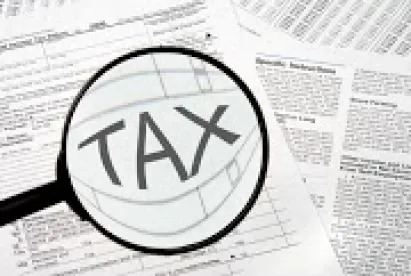Summary
Substantial tax reform is underway and the business community is intently awaiting details of this activity with the aim of positioning themselves to maximize opportunities and minimize any costs or risks that reform may present. How will a cut in the corporate income tax rate, the potential adoption of a “territorial” dividend exemption system or the elimination or altering of recent regulations impact companies?
In Depth
In the midst of a crowded legislative calendar, the White House and Congress have begun to focus in earnest on tax reform. Significant tax reform activity is expected from late September through the end of the year and possibly beyond. Key policy makers have indicated that some further details on a potential tax reform package may be coming as soon as the week of September 25, and the congressional tax writing committees may see activity on a tax reform package as soon as October, presumably after a budget resolution is passed. In addition, in response to Executive Order 13789, the Internal Revenue Service (IRS) is expected to release a final report to President Trump regarding certain tax regulations, recommending specific actions to mitigate the burden imposed by regulations that impose an undue financial burden on US taxpayers, add undue complexity to the federal tax laws or exceed the statutory authority of the IRS. Recent comments from IRS officials suggest that this report may be released by the end of this month.
The business community is eagerly awaiting the details of the promised tax reform, with a view to taking measures as soon as possible to maximize any opportunities and minimize any costs or risks that reform may present for particular businesses. At this point, it is impossible to predict the timing or the substance of any eventual tax reform package with much accuracy, but it nevertheless may be helpful to take a quick look at some likely proposals and their potential effects on taxpayers in certain industries or sectors.
Corporate Rate Cut
Of the many possible proposals, one of the most likely is a cut in the corporate income tax rate. President Trump has called for lowering the rate from the current 35 percent (one of the highest in the world) to 15 percent. The House Republicans previously set a goal of a 20 percent tax rate. While budget considerations and the inevitably controversial nature of any large offsetting revenue-raising measures will likely prevent Congress from achieving cuts of this magnitude, there does seem to be fairly wide agreement that some significant cut in the rate would be desirable and will be made a priority in tax reform. A major related question is the extent to which pass-through businesses may see a corresponding rate cut alongside any major cut in the corporate rate. Another question is whether any rate cut would be permanent or temporary (and if temporary, the duration of the cut).
Of course, a lower corporate tax rate will result in greater after-tax earnings for companies. The lower rate, potentially coupled with some long-awaited tax certainty, may spark corporate M&A activity. It may also have some effect on pricing, as certain tax attributes like net operating losses will have less value than in prior years.
In addition, taxpayers may consider strategies to defer income into years following the rate cut and to accelerate deductions into the current year (where they have greater value). A range of different measures may achieve the desired effect. Some examples might include accelerating bonus accruals, welfare benefits and pension contributions. In addition, intercompany debt might be used to achieve some deferral of income. Changes in accounting methods may also offer opportunities. Policy makers also might enact various restrictions alongside a rate cut to limit some of this planning.
At the same time, some multinational companies might consider measures to accelerate the repatriation of foreign earnings, based on a concern that foreign tax credits may be less valuable under a new post-reform international tax regime, or an expectation that it may be useful to have foreign tax credit carryforwards available to offset any transition tax that may be imposed in connection with the adoption of such a regime.
International Tax Reform
Perhaps the most fundamental international tax change under consideration will be the adoption of a “territorial” dividend exemption system, under which the United States would no longer impose material tax on dividends received by US corporate parents from foreign subsidiaries. It is important to note that the United States is probably not going to adopt a pure territorial tax system under which all foreign earnings of a US multinational group’s foreign subsidiaries would be exempt from US taxation. As under current law, some foreign earnings of these subsidiaries will still be subject to immediate US tax under rules that seek to limit the shifting of passive or highly mobile income to low-tax jurisdictions. These rules, if anything, are likely to be strengthened in connection with any adoption of a territorial system (e.g., through a tightening of the “subpart F” rules, or the adoption of a new “minimum tax” regime). In the context of the US tax reform debate, “territorial” really just means that the repatriation of foreign earnings would no longer be the system’s key taxable event. That does not resolve the question of how narrowly or broadly Congress will draw the scope of foreign earnings subject to immediate US tax without regard to repatriation. The net effect of any new “territorial” system on any given company will depend heavily on these details. These details are among the most eagerly awaited aspects of tax reform.
As part of the transition into a territorial dividend exemption system, it is likely that previously deferred foreign earnings would be deemed repatriated, thereby clearing historic earnings from the system as the new system begins. The effective tax rate to impose on this deemed repatriation will be an important subject of debate. It is generally expected that the effective rate will be much lower than 35 percent, and may be “bifurcated,” imposing a higher rate on the portion of a group’s earnings that is considered to be invested in cash or cash equivalents, and a lower rate on the portion of a group’s earnings that is considered to be invested in other business assets (such as plant and equipment). A bifurcated-rate approach is generally intended to ease the liquidity concerns presented by the imposition of a large amount of tax on group earnings that may not correspond with liquid assets of the group. While details yet to be unveiled will be critical to any planning approach to a transition tax, companies should be mindful of the possibility of such a tax as they take actions that may affect earnings and profits and cash levels.
In addition, although the US international tax reform discussion has tended to focus more on the outbound rules (primarily directed at US-based multinationals) than on the inbound rules (primarily directed at non-US-based multinationals), more recent focus has shifted toward the inbound rules. As the tax reform discussion advances, companies are eager to find out what balance of tax-cutting and tax-raising measures may be proposed by different policy makers with respect to inbound businesses.
Elimination or Modification of Recent Tax Regulations
Under Executive Order 13789 and IRS Notice 2017-38, the Secretary of the Treasury is due to release a final report recommending specific actions to mitigate the burden imposed by certain identified regulations that are considered to impose an undue financial burden on US taxpayers, add undue complexity to the federal tax laws or exceed the statutory authority of the IRS. Three of the more interesting regulations targeted in the interim report include the Section 385 regulations on the treatment of intercompany debt; the Section 987 regulations on foreign currency gain or loss; and the Section 367(d) regulations on outbound transfers of intangible property (presumably together with the temporary Section 482 regulations that were issued alongside the Section 367(d) regulations as originally proposed).
Much has been written on the regulations cited above. But in each case, the pending review raises questions concerning the state of the law in the event that the regulations are eliminated or substantially modified. While companies await the outcome of this review, they should be considering potential opportunities and risks that may arise in the wake of this project.
Conclusion
As noted above, it is still too early to predict with much detail or confidence what changes may eventually be enacted as part of tax reform. Nevertheless, companies can begin to position themselves for the coming tax reform push by considering the potential effects of some of the likely broad strokes of an eventual plan along the lines described above.





 />i
/>i
